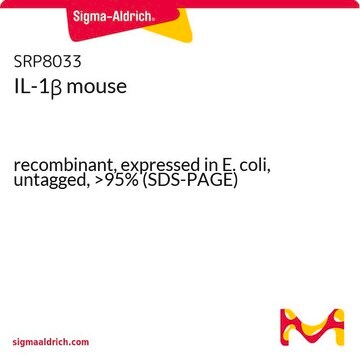AB1837P
Anti-Tumor Necrosis Factor-α Antibody
Chemicon®, from rabbit
Synonym(s):
TNF-alpha
About This Item
Recommended Products
biological source
rabbit
Quality Level
antibody form
affinity purified immunoglobulin
antibody product type
primary antibodies
clone
polyclonal
purified by
affinity chromatography
species reactivity
rat
manufacturer/tradename
Chemicon®
technique(s)
ELISA: suitable
western blot: suitable
NCBI accession no.
UniProt accession no.
shipped in
dry ice
target post-translational modification
unmodified
Gene Information
human ... TNF(7124)
Specificity
Immunogen
Application
0.2-0.4 ng/well when rat TNF-α is used to coat the plate.
Western blot: 0.1 - 0.2 μg/mL, this dilution should offer detection limit of 1.5 - 3.0 ng/lane, under reducing or non-reducing conditions.
Optimal working dilutions must be determined by the end user.
Signaling
Growth Factors & Receptors
Linkage
Physical form
Storage and Stability
Other Notes
Legal Information
Disclaimer
Not finding the right product?
Try our Product Selector Tool.
Storage Class Code
13 - Non Combustible Solids
WGK
WGK 3
Flash Point(F)
Not applicable
Flash Point(C)
Not applicable
Certificates of Analysis (COA)
Search for Certificates of Analysis (COA) by entering the products Lot/Batch Number. Lot and Batch Numbers can be found on a product’s label following the words ‘Lot’ or ‘Batch’.
Already Own This Product?
Find documentation for the products that you have recently purchased in the Document Library.
Our team of scientists has experience in all areas of research including Life Science, Material Science, Chemical Synthesis, Chromatography, Analytical and many others.
Contact Technical Service






